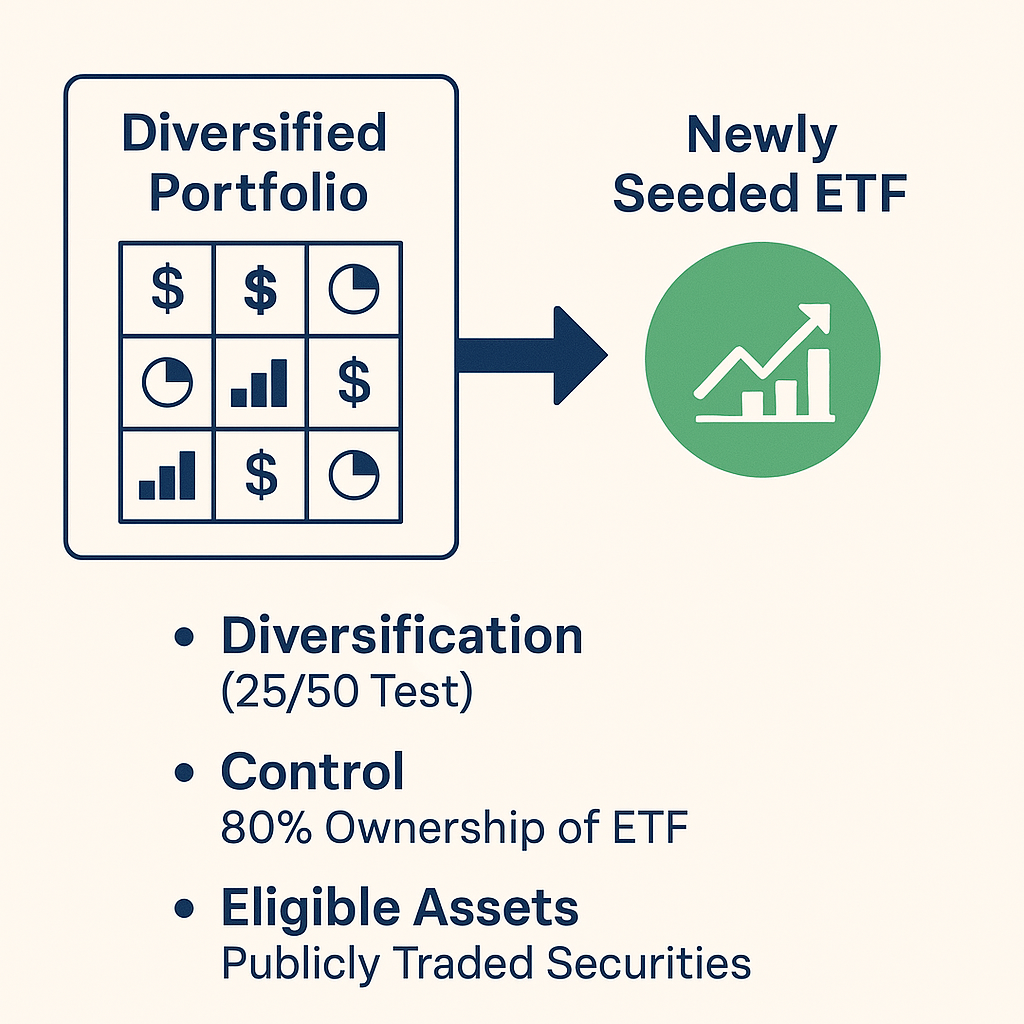If you’re managing a large investment portfolio, you’ve probably faced this dilemma: your investments have grown significantly, but they’re no longer balanced the way you want. The problem? Selling to rebalance could trigger massive tax bills that eat into your gains.
Enter ETFs and a little-known tax strategy called “351 exchanges” – a perfectly legal way to restructure your portfolio without Uncle Sam taking a big bite.
The Tax Problem Most Investors Face
Let’s say you bought Apple stock years ago for $10,000, and it’s now worth $100,000. If you sell to diversify into other investments, you’ll owe capital gains tax on that $90,000 profit. For high earners, that could mean paying over $20,000 in taxes just to rebalance their portfolio.
This is where ETFs become your best friend to help defer taxes.
What Makes ETFs So Tax-Efficient?
ETFs (Exchange-Traded Funds) have a special legal structure that makes them incredibly tax-efficient. Here’s the key difference:
Regular mutual funds: When investors sell their shares, the fund often has to sell stocks to raise cash, potentially triggering taxable gains for everyone in the fund.
ETFs: Instead of selling stocks for cash, ETFs can swap actual stocks with large institutional investors. This “in-kind” exchange doesn’t trigger taxable events, keeping your tax bill low.
Think of it like trading baseball cards instead of selling them for cash – no taxable transaction occurs when you simply swap assets.
The Secret Weapon: Section 351 Exchanges
Here’s where it gets really interesting. The tax code has a provision called Section 351 that allows you to contribute assets to a corporation in exchange for stock – completely tax-free.
Normally, this doesn’t work with investment companies. But there’s a loophole: if your portfolio is already diversified before you make the exchange, you can use this strategy with ETFs.
How Does a 351 Exchange Work?
Imagine you have a $10 million portfolio of various stocks that has appreciated significantly. Instead of selling everything and paying huge taxes, you can:
- Find or create an ETF that matches your investment goals
- Contribute your diversified portfolio directly to the ETF
- Receive ETF shares in return – no cash changes hands
- Pay zero taxes on the exchange
Your portfolio gets professionally managed, you maintain market exposure, and you’ve effectively “reset” your investment strategy without triggering capital gains.
The Three Requirements You Must Meet
To qualify for this tax-free exchange, you need to satisfy three key rules:
1. Diversification Test
Your portfolio must pass the “25/50 test”:
- No single company can represent more than 25% of your portfolio
- Your top 5 holdings combined can’t exceed 50% of your portfolio
2. Control Requirement
You and other contributors must collectively own at least 80% of the new ETF after the exchange. This ensures you’re truly “in control” of the new entity.
3. Asset Eligibility
Only publicly traded stocks, bonds, and ETFs qualify. You can’t contribute private equity, cryptocurrency, or other alternative investments.
Why This Matters for Your Wealth
This strategy isn’t just about avoiding taxes – it’s about maximizing your long-term wealth. Every dollar you don’t pay in taxes continues to compound and grow in your portfolio.
For example, if you save $500,000 in taxes through a 351 exchange and that money grows at 7% annually, you’ll have an extra $1.9 million after 20 years.
Who Benefits Most?
This strategy is particularly powerful for:
- High-net-worth individuals with concentrated stock positions
- Family offices managing multi-generational wealth
- Corporate executives with large equity compensation packages
- Anyone with significant unrealized gains who wants to diversify
The Bottom Line
Section 351 exchanges combined with ETF structures create a powerful tool for tax-efficient portfolio management. While the rules are complex and require careful planning, the potential tax savings can be enormous.
This isn’t just a technical tax strategy – it’s a wealth preservation tool that can help you keep more of your investment gains working for you instead of going to taxes.

